10 Commandments of Wood Burning Stoves: A Guide to Eco-Friendly and Efficient Usage
- November 17, 2023
- 4 comment
Wood burning stoves evoke a warm, nostalgic feel, making any room cozy with their gentle crackle and radiant heat. Yet, in today’s world where environmental awareness and energy efficiency are paramount, using these stoves responsibly becomes crucial. They’re more than just a source of heat; they represent a commitment to sustainable living. To align the traditional charm of wood stoves with modern ecological standards, it’s essential to adopt practices that enhance their efficiency and minimize environmental impact.

The ten golden rules for wood stove usage are designed not only to optimize the performance of these stoves but also to ensure they are used in an environmentally friendly way. These guidelines serve as a bridge between enjoying the timeless comfort of a fire and fulfilling our responsibility to the planet. By adhering to these principles, users can enjoy the warmth of their stoves while also being mindful stewards of nature’s resources, ensuring that the art of wood burning remains both a practical and a cherished tradition in homes.
List of Wood Burning Stove 10 Commandments:
- 1st Commandment – Thou Shalt Upgrade to Modern Stoves
- 2nd Commandment – Thou Shalt Match Stove to Space
- 3rd Commandment – Thou Shalt Use the Right Fuel
- 4th Commandment – Thou Shalt Ignite Fires Carefully
- 5th Commandment – Thou Shalt Adjust Airflow Early
- 6th Commandment – Thou Shalt Keep Air Flowing
- 7th Commandment – Thou Shalt Add Wood Wisely
- 8th Commandment – Thou Shalt Burn Wood Completely
- 9th Commandment – Thou Shalt Care for Your Stove
- 10th Commandment – Thou Shalt Keep Heat Inside
Now, without further ado, let’s dive into the 10 Commandments that will enlighten our path toward a more responsible and efficient wood burning practice!
1st Commandment – Thou Shalt Upgrade to Modern Stoves
Upgrading to a modern wood stove or fireplace insert can significantly enhance your home’s heating efficiency while minimizing environmental impact. Traditional wood stoves and fireplace inserts, often charming in their design, lack the advancements in combustion technology that modern models possess. These older stoves can be less efficient and produce higher levels of pollutants due to incomplete combustion of wood. Modern clean-burning stoves, on the other hand, utilize advanced technologies that achieve a more complete burn, drastically reducing emissions and increasing the amount of heat generated from each piece of wood.

For those attached to the ambiance of a traditional fireplace, a fireplace insert can be an ideal solution. These units are designed to fit into your existing fireplace, transforming it into a much more efficient source of heat. This upgrade allows you to maintain the aesthetic appeal of a classic fireplace while significantly improving its functionality and environmental performance. Additionally, if you own antique wood stoves, consider preserving them as decorative elements to honor their historical or cultural significance. This approach respects their aesthetic value while aligning your home heating practices with contemporary environmental standards, ensuring you enjoy both beauty and efficiency without compromising on air quality.
2nd Commandment – Thou Shalt Match Stove to Space
When choosing a new wood stove, it’s essential to consider not just the aesthetic appeal but also its compatibility with your home’s specific heating requirements and architectural features, especially the chimney’s design and condition. The process goes beyond aesthetics to ensure the stove operates efficiently and fits your living space perfectly. A well-matched stove complements your home’s heating needs and enhances overall efficiency.

The chimney is crucial in determining how well your stove will function, influencing the draft necessary for effective combustion. Characteristics like the chimney’s height, diameter, insulation, and airtightness directly affect this draft, facilitating the efficient draw of air necessary for fueling the fire and expelling smoke. Properly managing this system involves not only a good initial setup but also regular adjustments to the air vents, which are critical for controlling the combustion process. Getting these settings right ensures the stove maintains a clean, efficient burn, thus optimizing your home’s warmth and comfort.
3rd Commandment – Thou Shalt Use the Right Fuel
Beware: your wood stove is designed specifically for burning firewood. Deviating from this designated use by burning alternative materials not only abuses the stove’s purpose but also increases the risk of dangerous emissions and chimney fires. Different woods burn differently; hardwoods like birch burn longer and hotter than softer woods like spruce, affecting both heating efficiency and the duration of your fire.
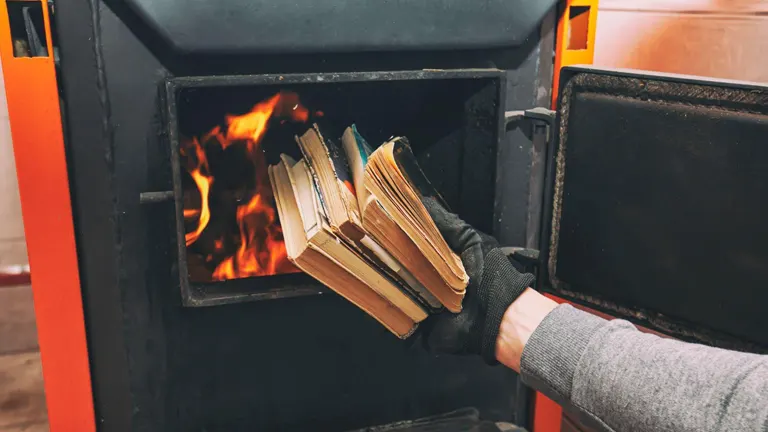
Avoid the allure of burning inappropriate items such as overly bark-covered logs or paraffin-based firelighters. The excessive bark increases particulate emissions, and chemicals in paraffin firelighters can produce harmful fumes and residues. Equally, refrain from burning compressed wood briquettes or household trash, which can emit toxic substances and contravene the principles of safe and environmentally conscious wood burning. Stick to suitable, high-quality firewood to ensure the safety, efficiency, and longevity of your wood stove.
4th Commandment – Thou Shalt Ignite Fires Carefully
Igniting your wood stove requires both careful preparation and an understanding of effective burning techniques. Begin by arranging your firewood thoughtfully; lay the larger, sturdier logs at the base of your stove to form a solid foundation. This base will support smaller, quicker-burning logs placed delicately on top, facilitating an even and controlled burn. This strategic layering helps the fire burn downwards smoothly, from the smaller logs to the denser, larger ones, enhancing combustion efficiency.
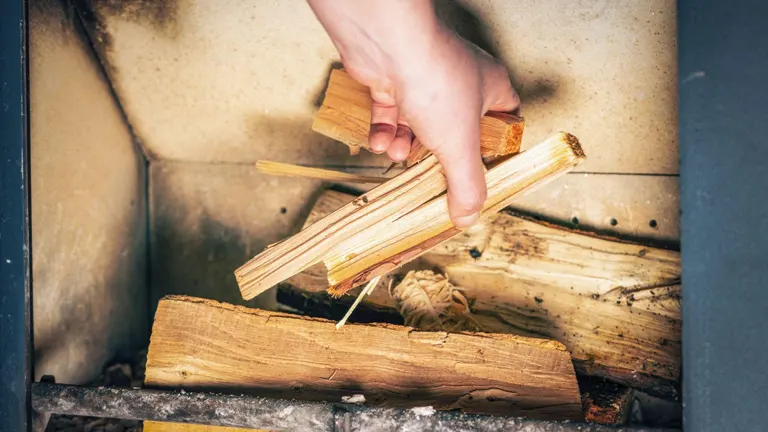
For kindling, opt for small wood chips or birch bark, both of which ignite quickly and efficiently. Place these at the top of your log structure and light the fire from above. This top-down lighting method not only ensures a quicker and cleaner burn but also minimizes smoke and unburned particles. Avoid using newspapers or other paper products as starters; the inks and chemicals they contain can release undesirable substances into your home. By adhering to these methods, you ensure a more sustainable and efficient fire, setting the stage for a warm, inviting atmosphere in your home.
5th Commandment – Thou Shalt Adjust Airflow Early
Mastering the air supply is critical when igniting your wood stove. Start by slightly opening the stove door to allow just the right amount of air to ignite the kindling effectively. During this critical phase, ensure that any exhaust fans within the home are turned off to avoid disrupting the air balance essential for proper ignition.
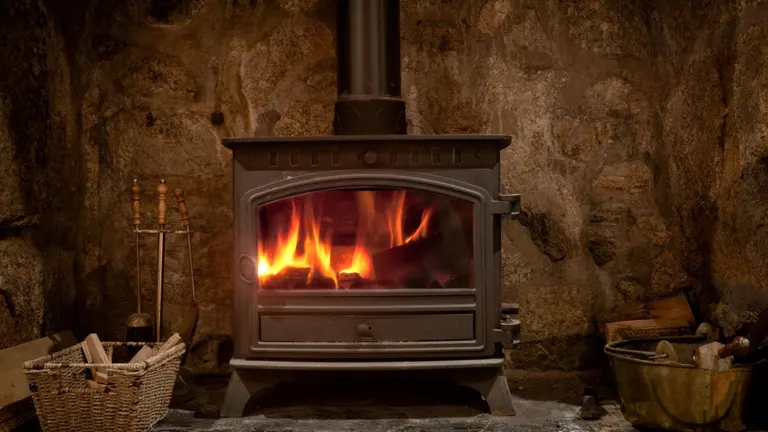
Once the fire is lit and begins to establish itself, fully open the air vents to give the flames a fuller breath of life, supporting a strong and steady fire. However, as the fire stabilizes and the draft in the chimney becomes consistent, gradually reduce the air intake by adjusting the vents. This careful management of air ensures efficient burning and prevents the flames from becoming too vigorous, which could lead to excessive heat or faster burn-out of your wood. Properly adjusting the air supply not only maximizes the energy efficiency of your stove but also enhances the safety and longevity of your fire, making each burning session optimal.
6th Commandment – Thou Shalt Keep Air Flowing
Once your fire is alight and the warmth fills the room, remember the golden rule of moderation, especially regarding air supply. Sealing off the air entirely might seem like a way to extend the burn time, but it actually disrupts the efficiency of your wood stove. Instead, maintain a steady, moderate flow of air. This allows the flames to perform their delicate dance, ensuring that the fire burns harmoniously and efficiently.
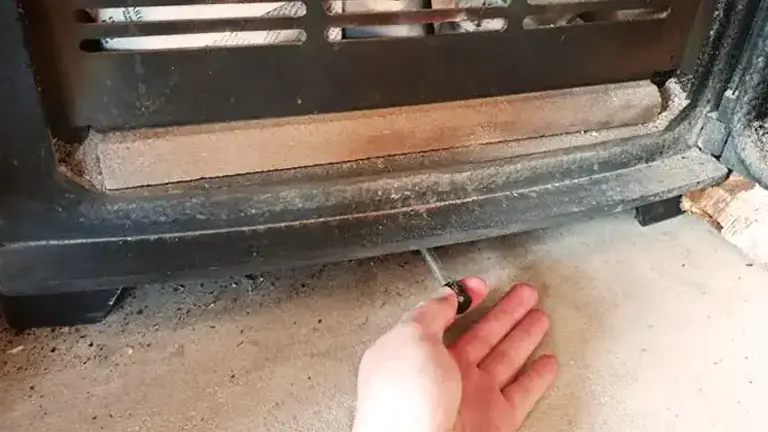
As you add wood, do so in small, frequent increments to maintain a consistent temperature inside the stove. This method ensures that the fire burns steadily, providing continuous warmth. Fully closing the air supply may seem beneficial, but it leads to smoldering, inefficient combustion, and increased emissions. Such practices can harm both indoor air quality and the environment, underscoring the importance of thoughtful air management in wood stove operation.
7th Commandment – Thou Shalt Add Wood Wisely
Managing your wood stove efficiently requires careful attention to how and when you add wood. Each piece of wood should be placed one at a time onto the glowing bed of embers, ensuring that it doesn’t touch the stove’s walls or glass to avoid damage and allow for an even burn. This practice isn’t just about maintaining the stove; it’s crucial for achieving an efficient burn and prolonging the life of your stove.
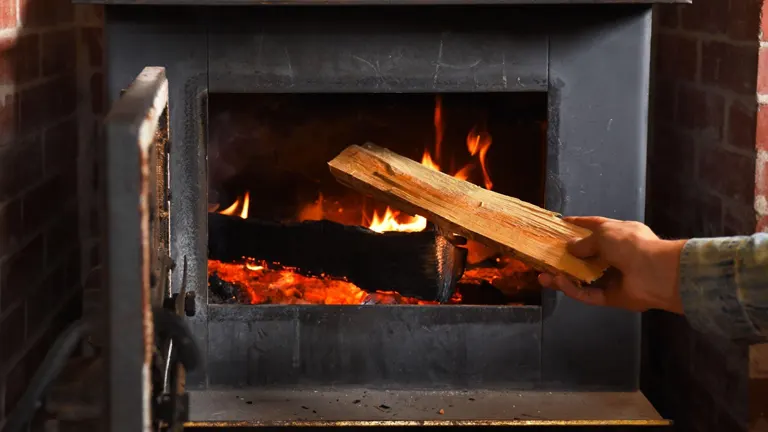
Adjust the frequency of adding logs based on the temperature outside and your home’s heating needs. Each addition should be considered and deliberate to maintain a stable temperature inside your home. When opening the stove door to add more wood, do so slowly and gently. This avoids disturbing the fire’s equilibrium, preventing smoke and unburnt particles from escaping into your living space. A mindful approach to adding wood not only enhances the efficiency of your stove but also ensures the air quality in your home remains clean.
8th Commandment – Thou Shalt Burn Wood Completely
The importance of allowing a wood stove fire to complete its combustion process cannot be overstated. Ensuring that each log and ember burns fully not only maximizes the energy released but also minimizes waste. By keeping the air vents open until the fire has completely died down, you ensure that every bit of fuel is effectively utilized, transforming the wood into a fine ash.
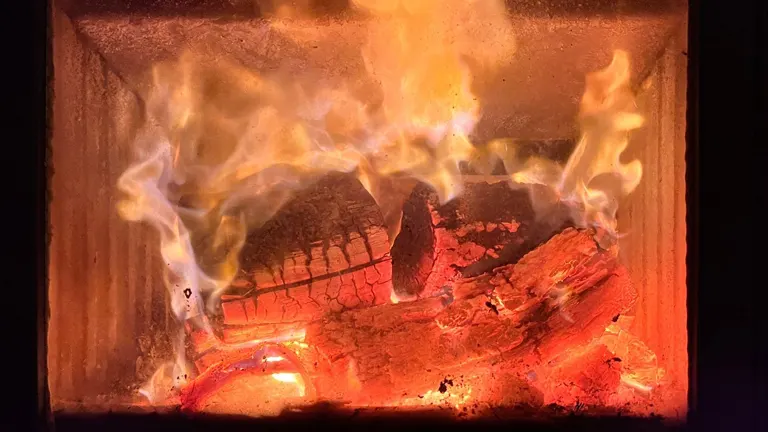
This complete combustion process is critical for maintaining the efficiency of your stove. Additionally, saving some of the resultant charcoal can be beneficial; it can act as an excellent catalyst for your next fire, providing a more robust start. However, regular removal of ashes is crucial as it helps maintain proper airflow and efficiency for subsequent fires. After the fire has ended and the stove is not in use, closing the air vents helps conserve the heat within the home, preventing unnecessary heat loss through the chimney. This final step is essential in preparing your stove for its next use, ensuring it continues to provide warmth efficiently.
9th Commandment – Thou Shalt Care for Your Stove
Maintaining your wood stove involves not just routine cleaning but also an ongoing commitment to its overall care, ensuring its effectiveness and longevity. Start with the essential task of ash removal. Regular clearing of ashes ensures optimal airflow and efficiency, maintaining your stove’s performance. Daily checks and removal of ash should become a part of your routine.

Next, inspect the stove’s gaskets regularly. These are crucial for maintaining the air seal around doors and windows and should be checked for any signs of wear or damage to prevent air leaks that could affect the stove’s efficiency and safety. Similarly, regular chimney maintenance is critical. Frequent cleaning of the chimney prevents the buildup of creosote, which can lead to dangerous chimney fires. Finally, the internal surfaces and stove pipe should also be cleaned periodically to remove any soot or residue, ensuring that heat transfer is maximized and the risk of fire is minimized. Each of these steps not only enhances the performance of your stove but also ensures it remains a safe, efficient source of heat in your home.
10th Commandment – Thou Shalt Keep Heat Inside
In your stewardship of the hearth, being vigilant against the wasteful escape of heat is crucial. Conserving energy inside your home is not only practical but also a respectful nod to sustainable living. Use only dry firewood with a moisture content below 20% for more efficient and cleaner burning. Refrain from drying fresh logs indoors as it’s inefficient and could pose health risks.
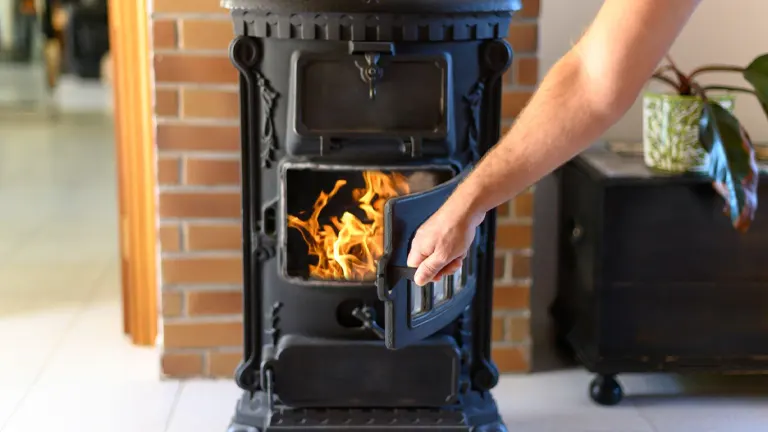
Properly manage the air vents on your stove. While they are essential for fueling the fire, overly open vents can draw in too much cold air, forcing your fire to work harder and resulting in energy loss. Balance the air intake with heat retention by adjusting the vents carefully. Monitor how much wood you add to the fire, especially when it’s already hot. Overloading can waste wood and heat, with excess heat escaping up the chimney, impacting both your comfort and energy costs. Lastly, watch for signs of inefficiency, like excessive smoke or too much charcoal residue, which indicate that not all the heat is being effectively used inside your home.
FAQs
- Can I cook on my wood stove?
Yes, many wood stoves are designed with flat tops that can be used for cooking. This method adds a rustic charm to meal preparation and is also energy efficient. - How does a wood stove impact my home’s insurance?
Installing a wood stove can affect your home insurance policy. Some insurers may increase premiums due to perceived risks, while others might require an inspection. It’s important to inform your insurance company when installing a wood stove. - Can wood stoves be environmentally friendly?
Modern wood stoves are designed to be much more environmentally friendly than older models. They burn more efficiently and produce fewer emissions. Choosing the right stove and using it correctly are key factors in minimizing environmental impact. - What’s the difference between a wood stove and a pellet stove?
Wood stoves burn firewood, while pellet stoves use small, compressed pellets made from wood waste. Pellet stoves often have automatic feeders and are easier to maintain, but they require electricity to operate. - How often should the chimney of a wood stove be cleaned?
It’s recommended to have your chimney inspected and cleaned at least once a year, preferably before the start of the heating season. However, usage and the type of wood burned can necessitate more frequent cleanings. - Is it possible to use a wood stove in a smoke-controlled area?
Yes, but you need a DEFRA (Department for Environment, Food & Rural Affairs) approved stove in the UK, for example. These stoves are designed to burn wood efficiently, reducing smoke emissions to comply with regulations. - Can I make my wood stove more efficient?
Yes, using dry, seasoned wood, ensuring proper ventilation, and regular maintenance can significantly improve your stove’s efficiency. Additionally, using a stove fan can help distribute the heat more evenly in the room. - Are there any health risks associated with wood stoves?
If not properly maintained, wood stoves can emit harmful pollutants, both indoors and outdoors, which can affect air quality and respiratory health. Proper ventilation and using the right kind of wood can mitigate these risks. - How does the size of a wood stove affect its performance?
The size of the stove should be proportional to the space it needs to heat. Too large a stove can overheat the space, while a too-small one will be inefficient. Proper sizing is crucial for optimal performance. - Can I install a wood stove myself?
While it’s possible, installing a wood stove involves critical considerations related to safety, efficiency, and local building codes. It’s generally recommended to have a certified professional install your stove to ensure it meets all safety standards.
We hope you found our 10 Commandments of Wood Burning Stoves both enlightening and practical! If you have any personal tips, experiences, or thoughts on eco-friendly and efficient wood stove usage, please share them in the comments below. Your insights could help others perfect their wood-burning practices and embrace a more sustainable way of heating. Let’s keep the conversation going and learn from each other!

David Murray
Forestry AuthorI'm David Murry, a forestry equipment specialist with a focus on chainsaw operation. With over 13 years of experience, I've honed my skills in operating and maintaining a wide range of machinery, from chainsaws to log splitters. My passion for the outdoors and commitment to sustainable forestry drive my work, which emphasizes safety, efficiency, and staying updated with industry advancements. Additionally, I'm dedicated to sharing my expertise and promoting environmental awareness within the forestry community.
4 comments
I wish my neighbour would comply with the commandment of only burning the correct wood
Anne Donnellan
November 21, 2023 11:26 pmI positively love this article! I am reading it as I await the arrival of my friend and confidant chinmey sweep. When I purchased my home it was without central heat. He walked me through the entire process and when it came time to purchase a new stove he guided me to a beautiful little Woodstock Soapstone perfect for my little 1100sf house and my lifetime supply of wood. Now I am looking for a new insurance company as Overly Insurance had dropped me because I have the woodstove and live more than 5 miles from the fire station. Of course, the house and the firestation are exactly where they were before and I've had the stove(s) for 18 years.
Sharon Holdren
November 21, 2023 3:09 pmBought my first wood stove in 1995, a Country Stoves free standing stove with 2-stage combustion, an excellent appliance. Sold it when i sold that house five years later. I cleaned the chimney and the soot would not fill a dixie cup. It blew my mind to see wood burning revert backwards post 2000. Wood is an awesome fuel when oxidized with "modern" technology.













Anyone with a stove should read a book called 'Norwegian Wood' by Lars Mytting. I'm not an avid reader but read it end to end. I've had Stoves for over 40 years and thought I knew what I was doing but didn't think about 'top lighting' until I read about it in the final chapter 'the fire.' This was concurred in the article but the book goes into great detail as to why this works to reduce smoke at the lighting stage of the fire.
Alan Entwistle
November 22, 2023 8:30 am